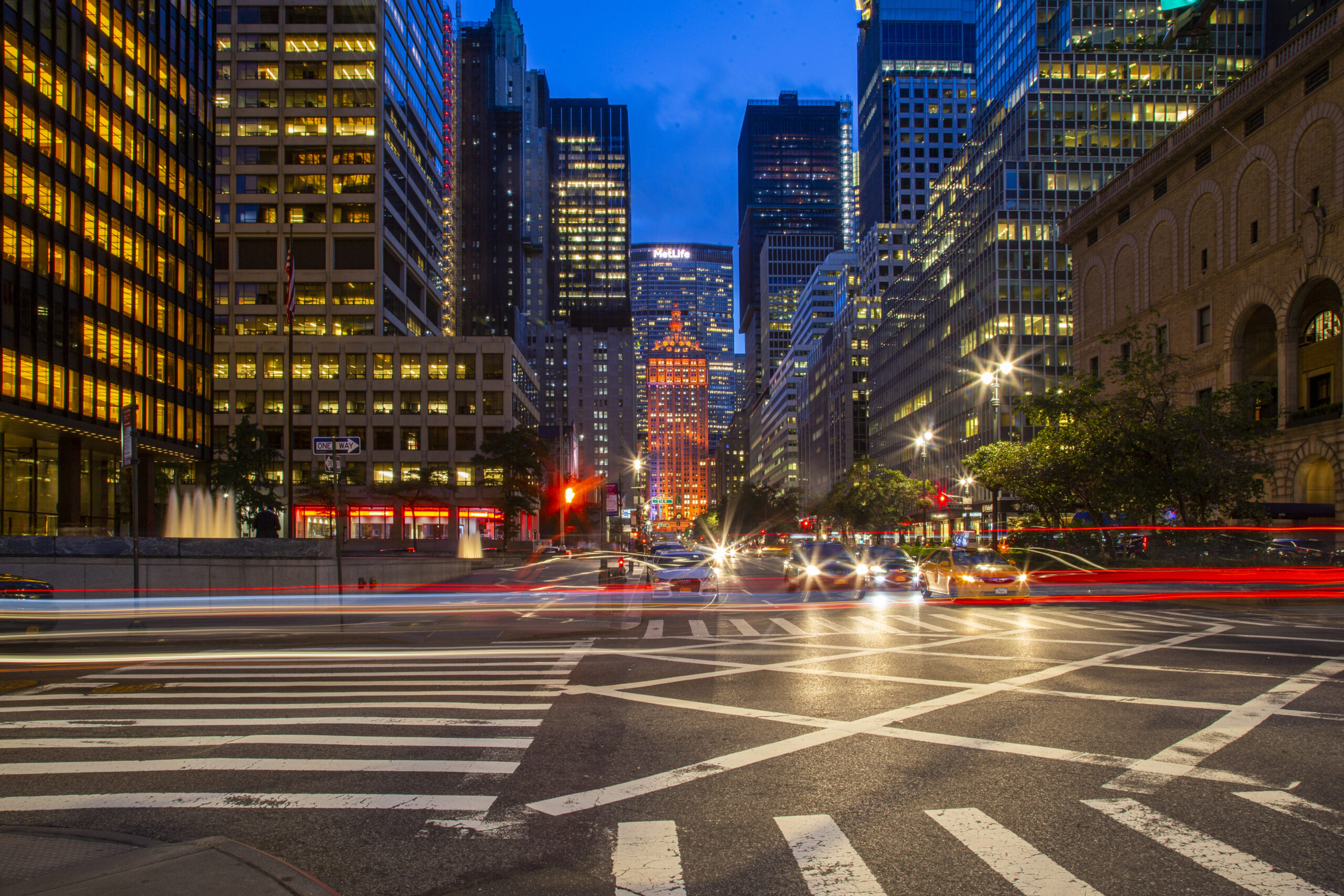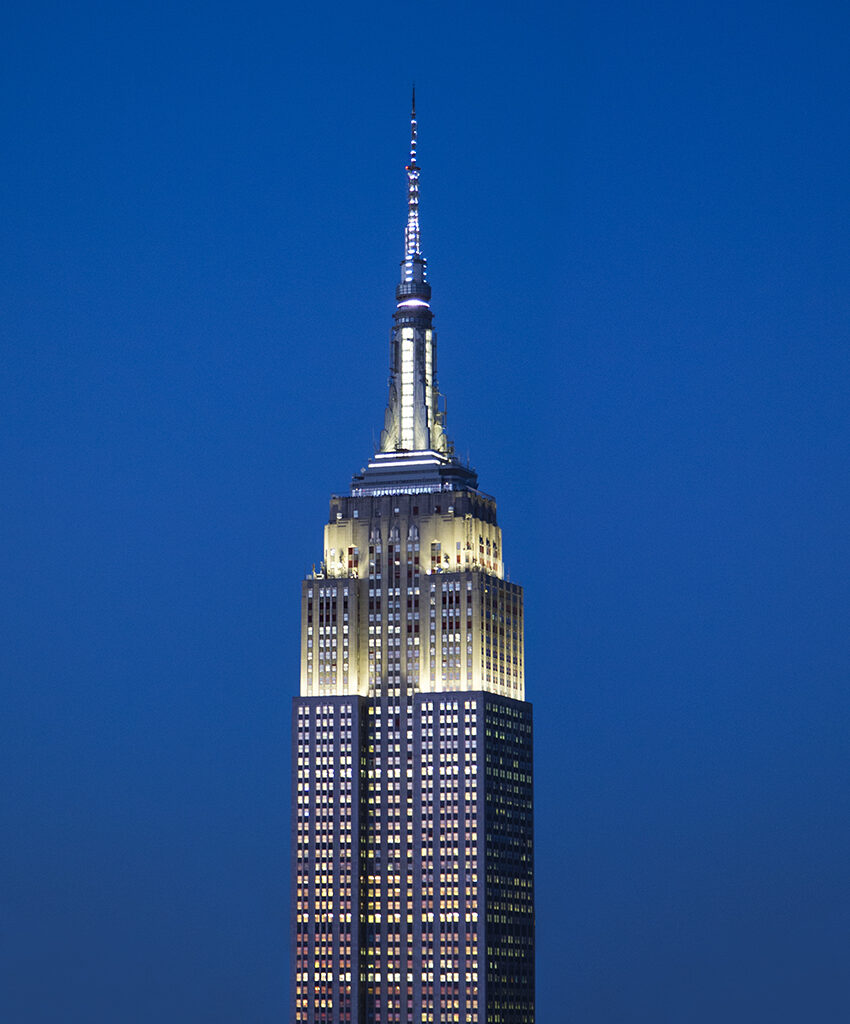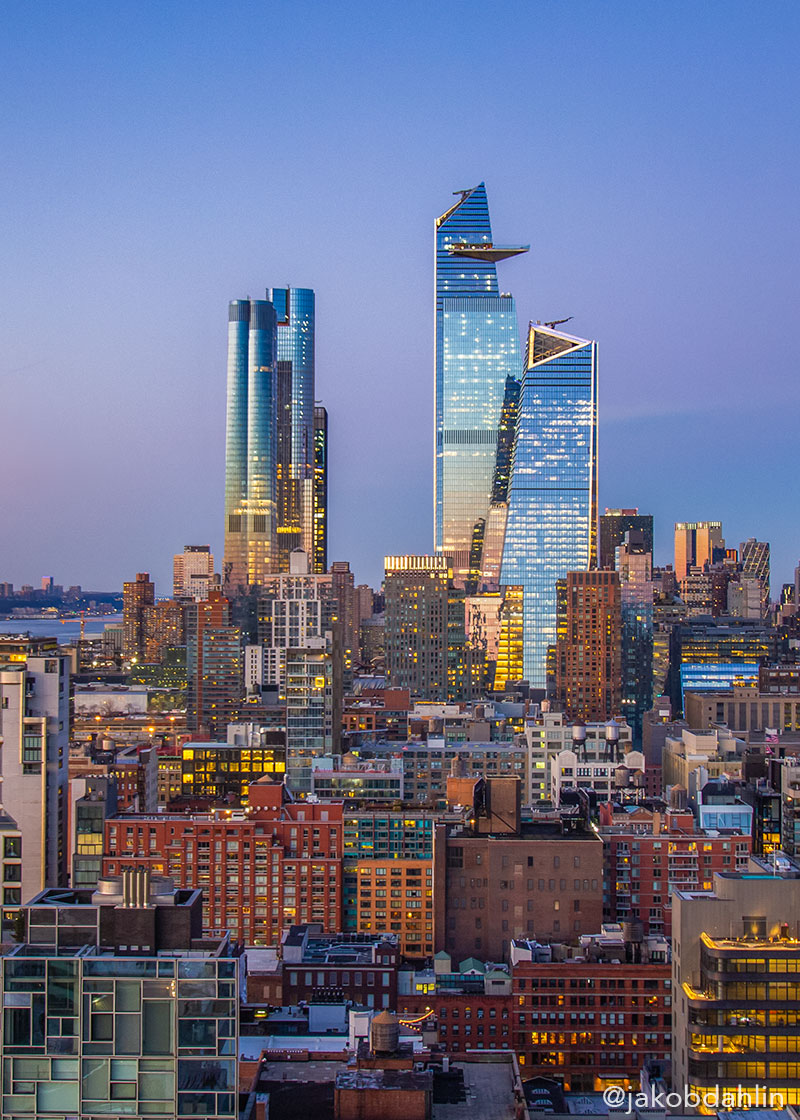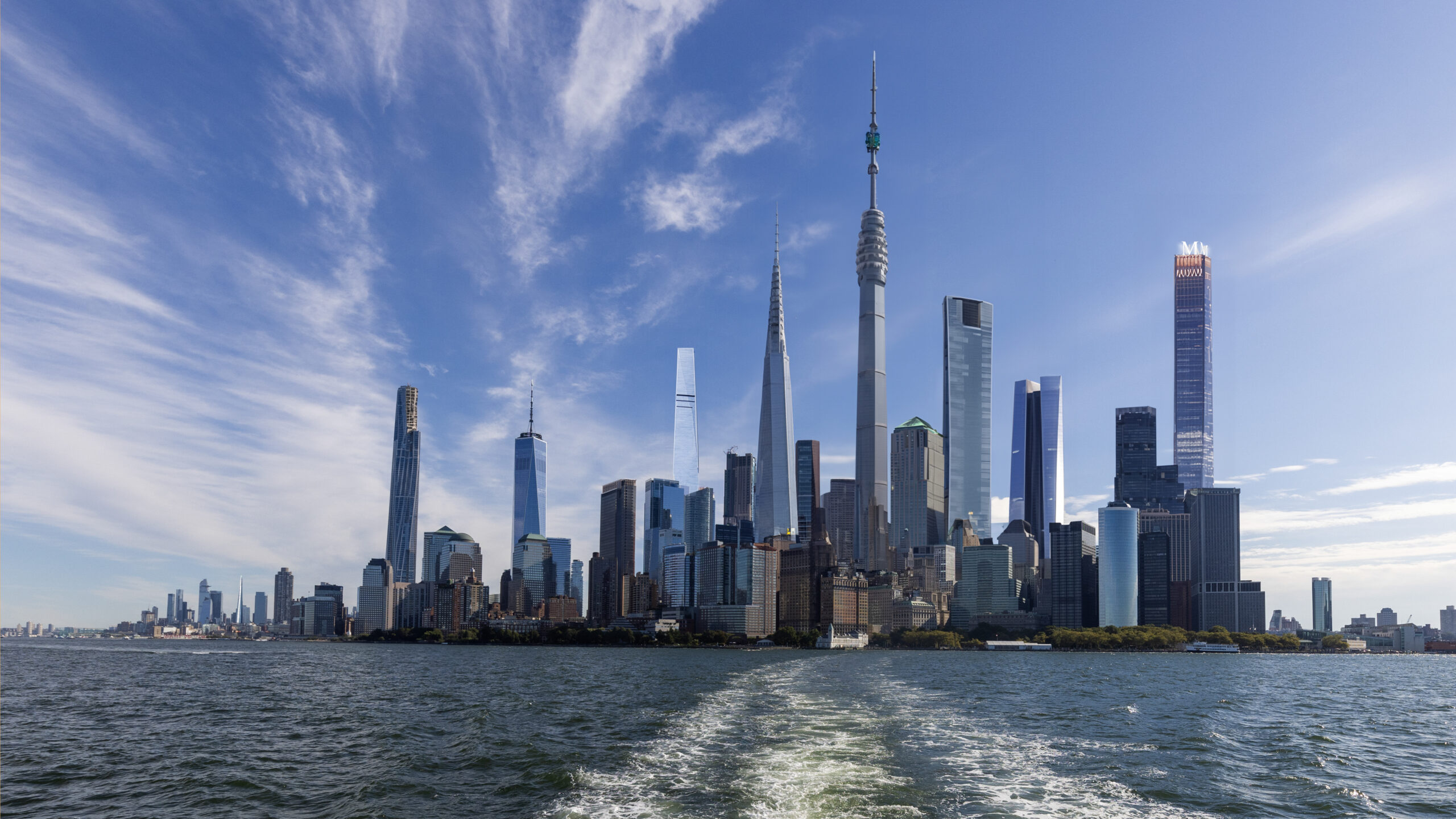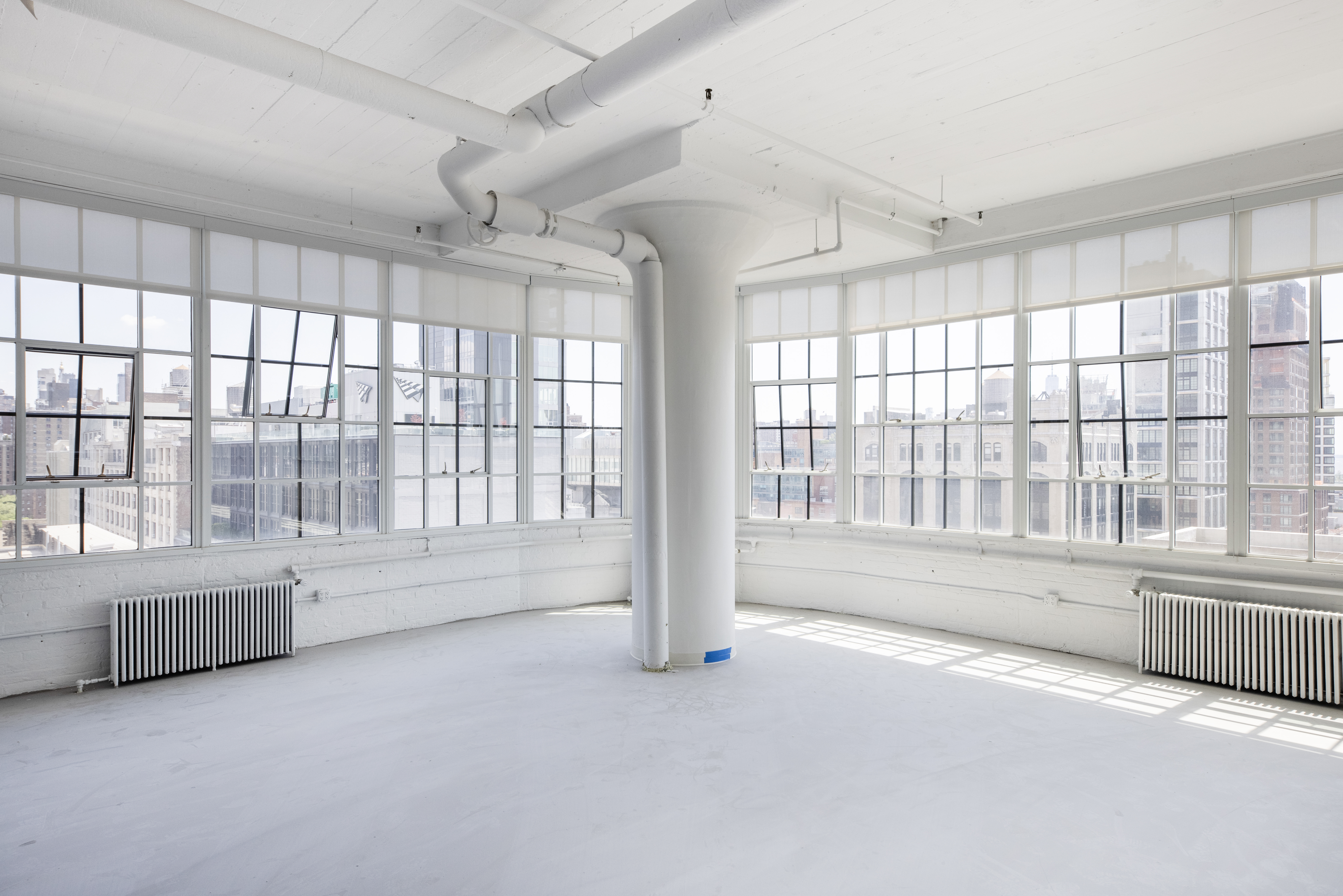Twilight photography, a term that evokes images of serene landscapes bathed in the soft glow of the setting sun, has found an unexpected muse: the architectural marvels of New York City. The city’s skyline, a blend of historic landmarks and modern skyscrapers, offers a unique canvas for photographers. But why has twilight photography become such a significant trend in capturing the essence of these structures?
The historical context of architectural photography
Architecture photography has a rich history, tracing back to the 1820s with the world’s oldest surviving photo, “View from the Window at Le Gras.” This medium has consistently held its ground, reflecting the importance of architecture in our lives. Buildings, after all, are not just functional entities; they are artistic expressions and enduring symbols of culture.
The right tools for the job
To capture the architectural essence of a building, especially during the twilight hours, requires specific equipment. DSLRs with full-frame sensors have long been the gold standard for this genre due to their ability to produce high-quality images with robust perspective control. Tilt-shift lenses, popular in architecture photography, allow for adjustments to the lens angle independent of the camera.
This feature is invaluable for avoiding perspective distortion, especially when photographing tall structures. Wide-angle lenses, on the other hand, are beneficial for capturing expansive structures but can introduce distortion at the edges. Thankfully, modern editing software can correct such distortions, ensuring the building’s lines remain true to form.

The artistic evolution of building photography
Initially, the primary objective of building photography was documentation. However, over time, it transformed into a diverse art form. Today, many photographers, driven by passion or profession, capture stunning architectural images. Some work for architecture firms, advertising agencies, or magazines, while others pursue it as a personal artistic endeavor.
Choosing the perfect subject
Often, photographers gravitate towards government buildings, museums, and historic landmarks, as these structures typically showcase intriguing or impressive architecture. Old buildings, whether pristine historical sites or weathered, abandoned structures, also make for captivating subjects. Tools like Shot Hot Spot, which uses geo-tagging data from platforms like Flickr, can help photographers identify popular architectural photography locations in their vicinity.
Understanding the building
Before capturing a building in twilight photography, it’s essential to familiarize oneself with it. Walking around the structure, exploring its interiors, and researching its history can provide valuable insights.
For instance, a building with a rich past might be best represented in black and white, adding a timeless quality to the image.
Moreover, understanding a building’s unique architectural features can guide the photographic approach, ensuring the structure’s essence is genuinely captured.
The magic of twilight
Shooting during sunrise or sunset can introduce golden hues, intriguing window reflections, and elongated shadows to the photograph. Nighttime shots, illuminated by artificial lighting, offer a different perspective altogether. Weather conditions, such as cloudy skies or rain-soaked surfaces, can also dramatically alter the mood of the image. Thus, twilight photography is not just about the time of day but also about capturing the interplay of natural and artificial light with architectural elements.
A unique perspective
While the instinct might be to capture the entire building, seeking a unique angle or focusing on specific details can lead to more compelling images. Experimenting with different perspectives, while keeping in mind basic composition rules, can result in captivating shots. Including people in the frame can also add dynamism, highlighting the relationship between humans and architecture.
In conclusion, twilight photography in New York City’s architectural landscape is not just about capturing buildings during the golden hour. It’s about understanding the structure, its history, and its place in the urban fabric, and then using the magic of dusk to tell its story.
The impact on NYC luxury listings

In the realm of real estate, especially luxury listings in bustling metropolises like New York City, the presentation is paramount. The way a property is showcased can significantly influence its perceived value and appeal. Twilight photography, with its ethereal glow, has emerged as a potent tool in this domain, casting properties in a light that resonates deeply with potential buyers.
The significance of lighting in architectural photography
Good lighting is the cornerstone of compelling architectural photography. While many are drawn to the dramatic effects of sunset hours, with their long shadows and vibrant colors, it’s essential to diversify. Capturing a building at different times of the day or under varying weather conditions can paint a comprehensive picture of its relationship with its surroundings. Such a holistic representation can provide potential buyers with a more in-depth understanding of the property.
Seeking the unconventional perspective
Every building has a story, and sometimes, the most captivating tales are hidden in the details. While wide-angle lenses are the go-to choice for architectural photography, they often miss the intricate nuances. Exploring a building up close can reveal facets of its history, construction, or design that might otherwise go unnoticed. Such details can be instrumental in highlighting the unique value propositions of luxury listings.
The human element in architectural photography
Historically, architectural photographs have often excluded human elements, presenting buildings as pristine, untouched entities. However, architecture is intrinsically linked to human experience. Including people in photographs not only adds dynamism but also underscores the relationship between humans and built spaces. In the context of luxury listings, this can help potential buyers visualize themselves within the property, fostering a deeper emotional connection.
Embracing modern tools and techniques
The world of architectural photography is continually evolving, with new tools and techniques offering enhanced capabilities. Post-processing software, such as Photoshop and Lightroom, allows photographers to correct lens distortions, ensuring that buildings are represented accurately. Moreover, drones equipped with high-quality cameras have opened up new vistas, enabling breathtaking aerial shots that can be particularly impactful for luxury properties with expansive grounds or unique rooftop features.
The importance of research and revisits
Understanding a building’s history and context can significantly influence the photographic approach. Luxury listings often come with rich histories or unique architectural features that can be highlighted to enhance their appeal. Furthermore, revisiting a property at different times can reveal new layers to its character. A luxury apartment might look serene during the early morning hours, bustling during the day, and resplendent under the city lights at night. Capturing these varied moods can provide a comprehensive view, aiding potential buyers in their decision-making process.
In conclusion, twilight photography, when combined with a deep understanding of the subject and the application of modern tools and techniques, can significantly elevate the appeal of NYC luxury listings. As the city’s skyline continues to evolve, this form of photography will undoubtedly play a pivotal role in shaping its architectural narrative.
Jakob Dahlin: The maestro of Manhattan dusk photography
In the vast realm of architectural photography, certain names stand out, not just for their technical prowess but for their ability to capture the soul of a structure. Jakob Dahlin is one such name, especially when it comes to twilight photography in New York City.
A glimpse into Dahlin’s journey
Jakob Dahlin’s journey in architectural photography is a testament to passion meeting purpose. His fascination with buildings, especially those that dot the Manhattan skyline, is evident in every frame he captures. But what sets Dahlin apart is his affinity for the twilight hour. His photographs, bathed in the soft hues of dusk, present a Manhattan that is both familiar and enchantingly different.
Madison Square Park Tower: A masterpiece in dusk photography
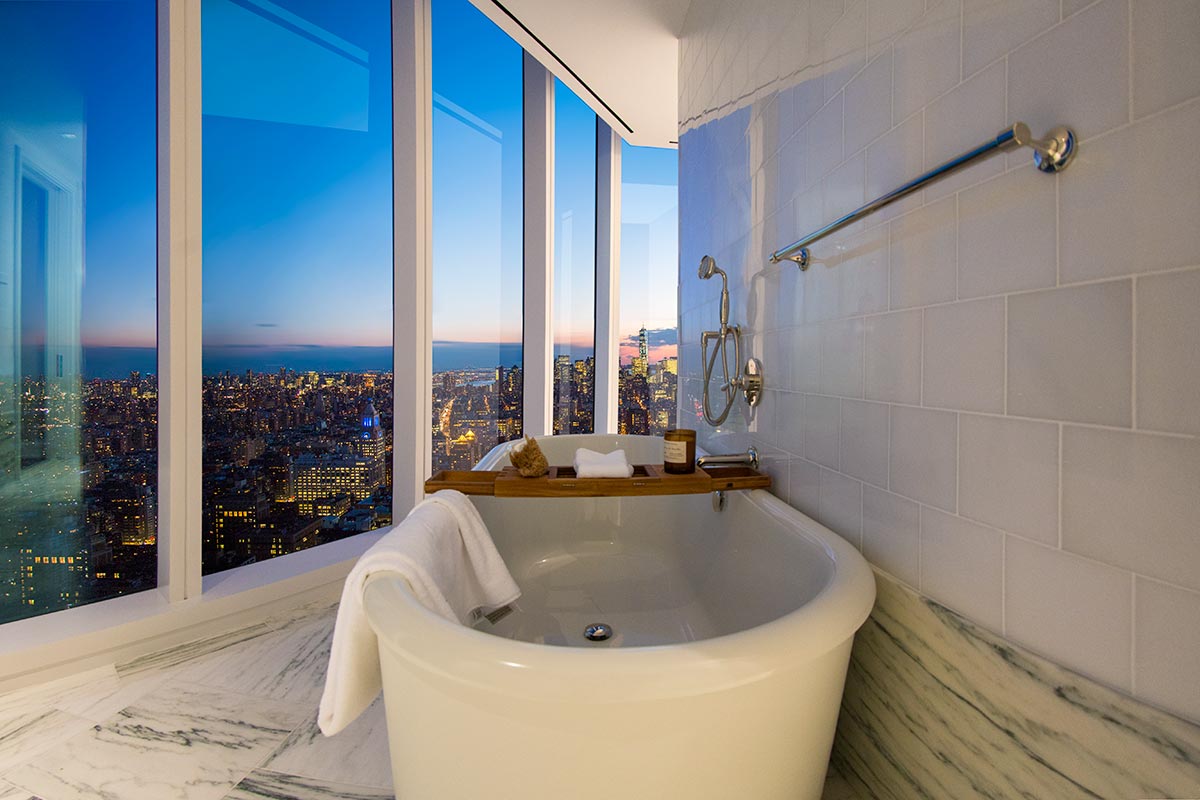
One of Dahlin’s most iconic works revolves around the Madison Square Park Tower. This luxury residential skyscraper, located in the Flatiron District of Manhattan, offers panoramic views of the city. Dahlin’s photographs of the tower, especially those taken during the twilight hours, are nothing short of mesmerizing. The interplay of natural and artificial light, combined with the tower’s architectural brilliance, results in images that are both evocative and ethereal.
The Madison Square Park Tower, with its sleek design and glass facade, reflects the city lights in a way that’s almost magical. Dahlin’s photographs capture this magic, presenting viewers with a perspective of Manhattan that’s rarely seen. The tower, standing tall against the backdrop of a setting sun, becomes a symbol of both luxury and architectural excellence.
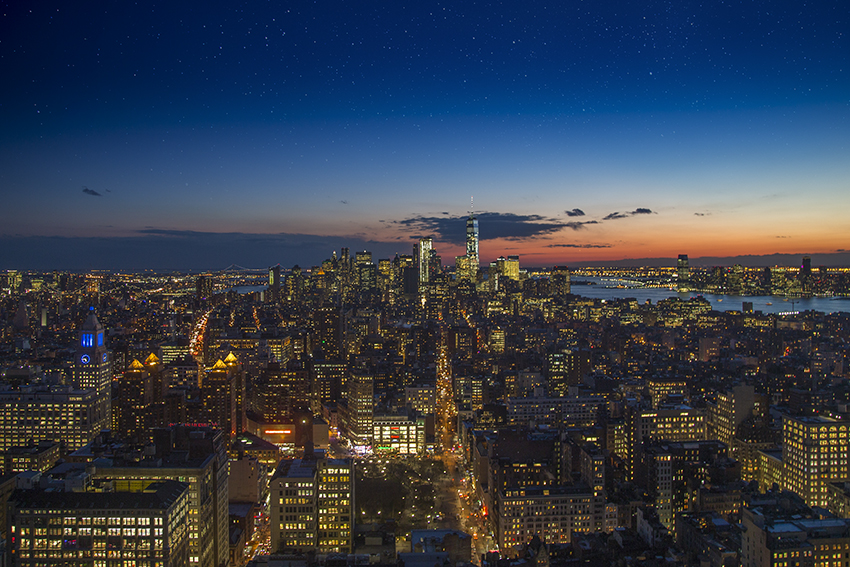
Other notable works
While the Madison Square Park Tower is undoubtedly one of Dahlin’s most recognized works, his portfolio is replete with images of other Manhattan buildings. Each photograph tells a story, highlighting the unique architectural features of the building while also capturing the essence of New York City. From historic landmarks to modern skyscrapers, Dahlin’s work covers a broad spectrum, always with a touch of twilight magic.
The dahlin effect on luxury listings
Jakob Dahlin’s twilight photographs have had a profound impact on luxury real estate listings in Manhattan. His images, which often serve as the primary visual representation of a property, play a crucial role in attracting potential buyers. The emotional connection that viewers establish with a property, upon seeing it bathed in the soft glow of dusk, is unparalleled. Real estate agents and property developers have recognized this, and many now prioritize twilight photography, inspired by Dahlin’s work, in their listings.
In conclusion, Jakob Dahlin’s contributions to architectural photography, especially in the context of luxury real estate in Manhattan, are invaluable. His ability to capture the essence of a building, combined with his mastery of twilight photography, has set new standards in the industry.
Challenges and considerations in twilight photography
Twilight photography, while undeniably captivating, comes with its own set of challenges. The period after sunset, often referred to as the “blue hour,” offers a unique lighting scenario that can be both a boon and a bane for photographers. Let’s delve into the intricacies of capturing the perfect twilight shot and the considerations that come into play.
The delicate balance of light
The blue hour, characterized by its soft, diffused light, lacks the harsh shadows of midday. However, this very absence of shadows can sometimes result in flat images devoid of depth. The key lies in understanding the interplay of light and shadow and using it to one’s advantage. By waiting for the right moment, photographers can capture scenes illuminated by a mix of the fading natural light and the emerging artificial lights from buildings and street lamps.
The role of long exposures
One of the primary techniques employed in twilight photography is the use of long exposures. As the name suggests, this involves keeping the camera’s shutter open for extended periods, allowing more light to hit the sensor. While this can result in beautifully lit images, it also introduces the risk of blurring due to camera shake or moving elements within the frame. A sturdy tripod is essential, as is a remote shutter release to minimize camera movement.
White balance
The transition from natural to artificial lighting during twilight can wreak havoc on a camera’s white balance settings. While auto white balance can often produce satisfactory results, it’s not always reliable. Photographers need to be adept at manually adjusting white balance to ensure that the colors in their images are true to life. Experimenting with different settings, from the cooler tones of tungsten to the warmer shades of daylight, can yield varied and often dramatic results.
The importance of scouting locations
Twilight, by its very nature, is fleeting. Photographers have a narrow window of opportunity to capture their desired shots. Pre-scouting locations, understanding the direction of light, and visualizing compositions can make the actual shooting process smoother and more efficient. Tools like The Photographer’s Ephemeris can assist in predicting the direction and quality of light at any given location and time.
Embracing the unexpected
While planning is crucial, twilight photography also requires a degree of flexibility. Weather conditions, unexpected light sources, and even serendipitous moments can all influence the final image. Embracing these unpredictable elements, rather than fighting against them, can lead to truly unique photographs.
In conclusion, while twilight photography presents its own set of challenges, the results, when done right, are well worth the effort. The ethereal quality of light, combined with the architectural wonders of cities like New York, can result in images that are both evocative and timeless.
The future of twilight photography in architectural narratives
As we stand on the cusp of technological advancements and changing architectural landscapes, twilight photography’s role in capturing the essence of structures becomes even more profound. The blend of natural and artificial lights, combined with the architectural marvels of cities, offers a canvas that is both dynamic and timeless.
Embracing technological advancements
With the advent of advanced camera sensors, AI-driven post-processing tools, and drone photography, the possibilities in twilight photography are expanding. Drones, in particular, offer a bird’s-eye view of structures, capturing their grandeur against the backdrop of a setting sun or the early hues of dawn. As technology continues to evolve, we can anticipate even more innovative techniques and tools that will redefine the boundaries of this art form.
Sustainability and architecture: A new narrative
As the world gravitates towards sustainable architecture, the narrative around buildings is changing. Structures are no longer just about aesthetics; they embody principles of sustainability, eco-friendliness, and harmony with nature. Twilight photography can play a pivotal role in capturing this narrative, highlighting the symbiotic relationship between buildings and their natural surroundings.
Concluding thoughts
Twilight photography, with its ethereal charm, has transformed the way we perceive buildings, especially in bustling metropolises like New York City. It’s not just about capturing structures; it’s about narrating a story, evoking emotions, and presenting a perspective that resonates with viewers. As we move forward, this art form will undoubtedly continue to shape architectural narratives, reflecting the evolving ethos of our times.
In the words of renowned photographer Robert Frank, “The eye should learn to listen before it looks.” Twilight photography, in its essence, is a testament to this philosophy, urging us to see beyond the obvious and find beauty in the interplay of light, shadow, and structure. As we conclude our exploration of this captivating subject, let us carry forward the appreciation for the moments that twilight photography encapsulates – moments that stand still in time, even as the world around them changes.



